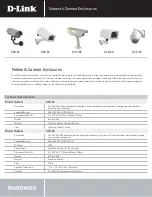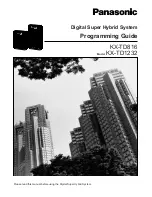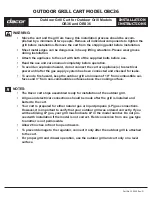
Refrigeration Service Procedures
133
1. Connect a high pressure gauge to the
discharge service port to monitor the
discharge pressure.
2. Start the unit while watching the discharge
pressure.
•
If the unit stops before the discharge
pressure rises to the HPCO opening
pressure (see “Specifications”), it is
probably a plugged discharge strainer or
faulty HPCO.
•
If the discharge pressure quickly rises to
the HPCO opening pressure (see
“Specifications”) before stopping, the CIS
is probably stuck closed. Check the wiring
to the CIS for a short circuit that is
energizing the solenoid coil before
assuming the solenoid is faulty.
Condenser/Radiator Coil
Replacement
Removal
1. Recover the refrigerant charge.
2. Remove the front panel.
3. Drain the engine coolant and disconnect the
coolant hoses from the condenser/radiator
coil.
4. Unsolder the hot gas inlet and liquid outlet
refrigerant line connections.
5. Unbolt and remove the condenser/radiator
coil.
Installation
1. Clean the tubes for soldering.
2. Place the coil in the unit and install the
mounting hardware.
3. Solder the hot gas inlet and liquid outlet
refrigerant line connections.
4. Pressurize the system and test for refrigerant
leaks.
5. If no leaks are found, replace the liquid line
drier then evacuate the system.
6. Connect the coolant hoses to the radiator and
refill the engine cooling system with the 50/50
antifreeze/water solution.
7. Recharge the unit with the proper refrigerant
and check the compressor oil.
8. Reinstall the front panel.
9. Bleed the cooling system.
Dehydrator (Filter-Drier)
Replacement
Removal
1. Pump down the low side and equalize the
pressure to slightly positive. Make sure to
front seat the suction service valve to isolate
the low side and use the suction access port to
access the low side.
2. Disconnect the nuts at the end of the drier.
3. Loosen the mounting hardware and remove
the drier.
Installation
1. Place the new O-rings in the ORS fittings on
the ends of the drier.
2. Install the new drier and tighten the mounting
hardware.
3. Install and tighten the ORS nuts. Hold the
drier with a back-up wrench on the hex behind
the ORS fitting.
4. Pressurize the low side and check for leaks.
5. If no leaks are found, evacuate the low side.
6. Open the refrigeration valves and place the
unit in operation.
Discharge Pressure Regulator
(DPR) Test
1. Attach a gauge manifold to the suction service
valve and the discharge service port. A low
loss fitting must be used on the hose
connected to the discharge service port.
2. Operate the unit in high speed heat until the
system pressures stabilize.
Summary of Contents for UT-1200
Page 10: ...Table of Contents 10...
Page 20: ...Safety Precautions 20...
Page 76: ...Operating Instructions for Premium HMI Control Panel 76...
Page 88: ...Electrical Maintenance 88...
Page 98: ...Engine Maintenance 98 Figure 167 Fuel Components...
Page 142: ...Refrigeration Service Procedures 142...
Page 148: ...Clutch Maintenance 148...
Page 150: ...Structural Maintenance 150...
Page 162: ...Wiring and Schematic Diagrams Index 162...
Page 163: ...163 Schematic Diagram Page 1 of 2...
Page 164: ...164 Schematic Diagram Page 2 of 2...
Page 165: ...165 Wiring Diagram Page 1 of 5...
Page 166: ...166 Wiring Diagram Page 2 of 5...
Page 167: ...167 Wiring Diagram Page 3 of 5...
Page 168: ...168 Wiring Diagram Page 4 of 5...
Page 169: ...169 Wiring Diagram Page 5 of 5...
















































